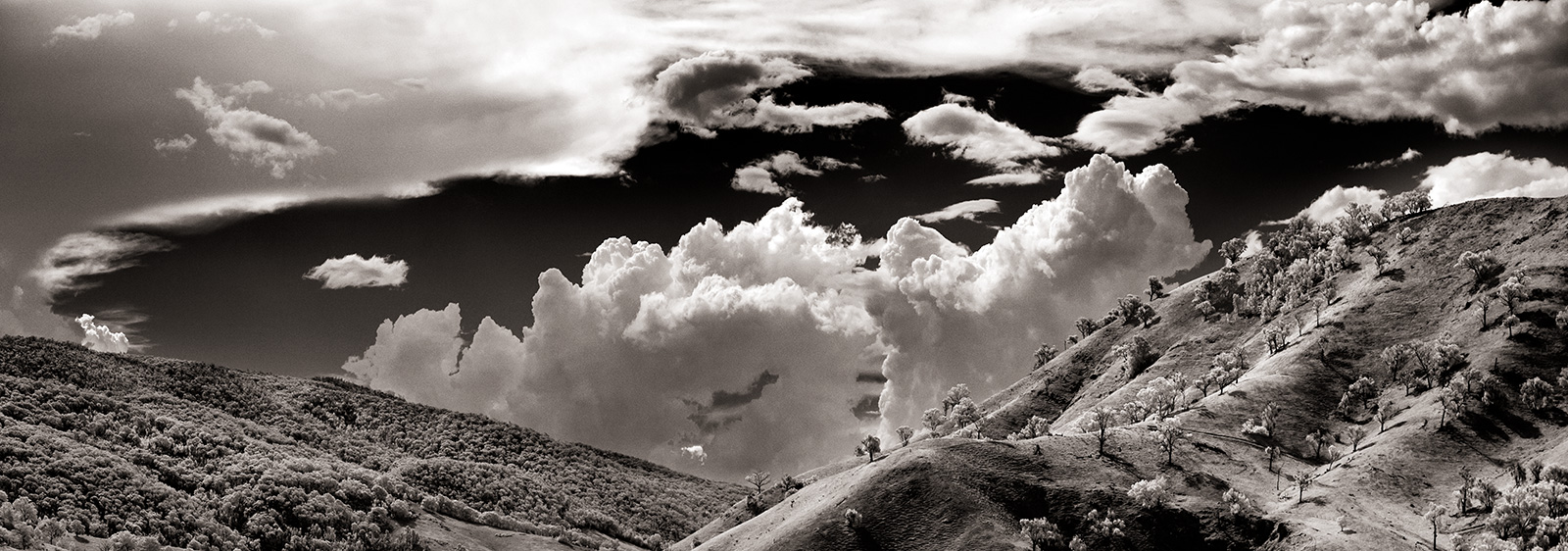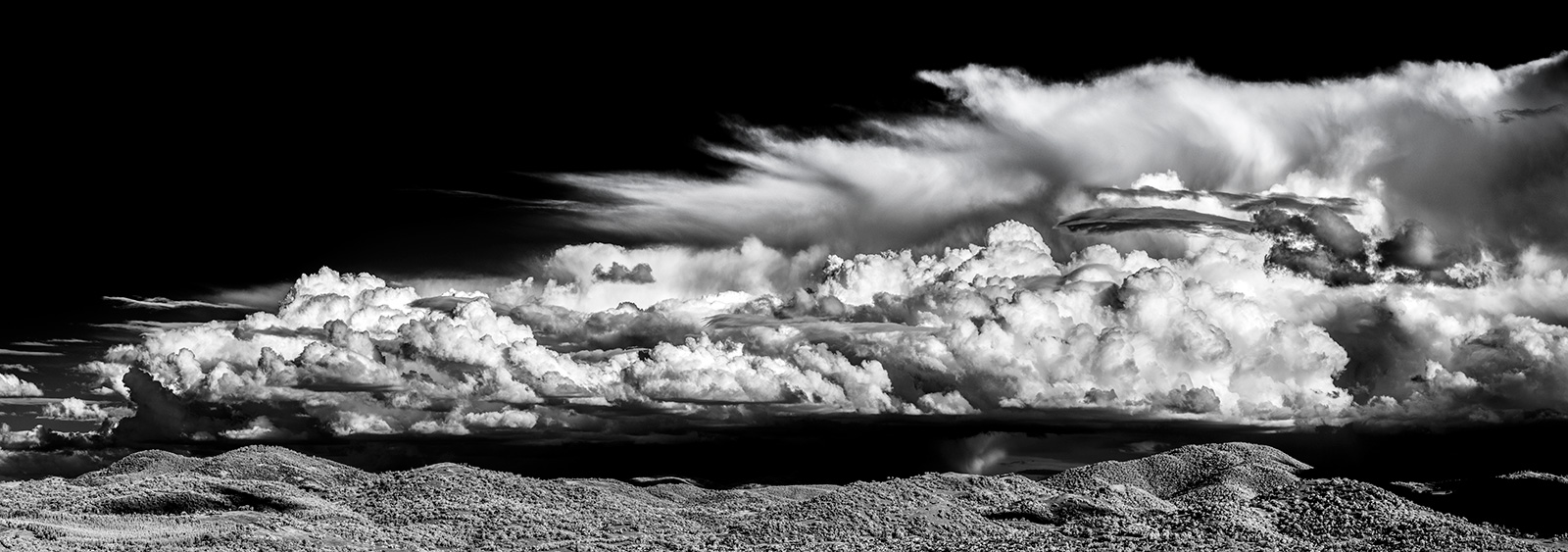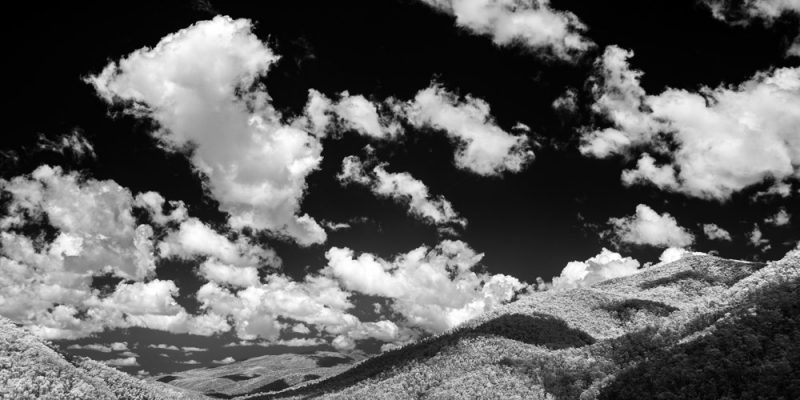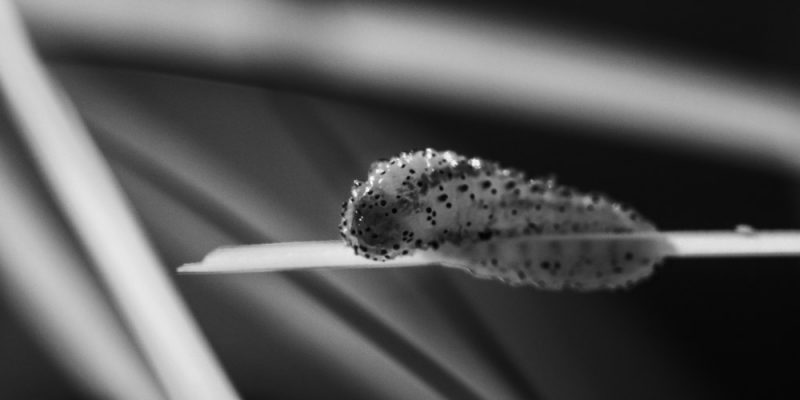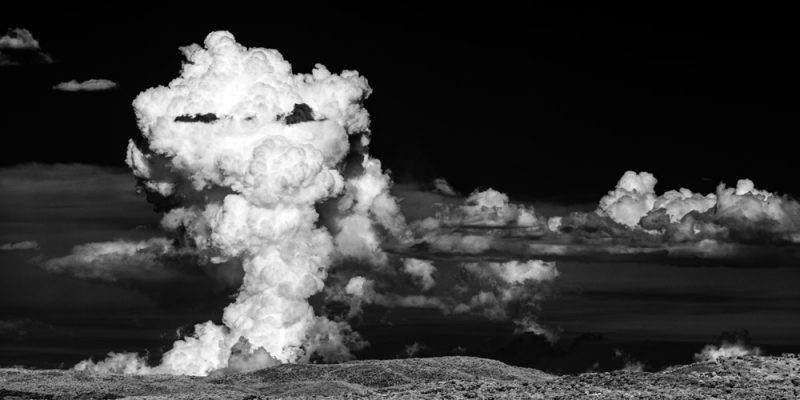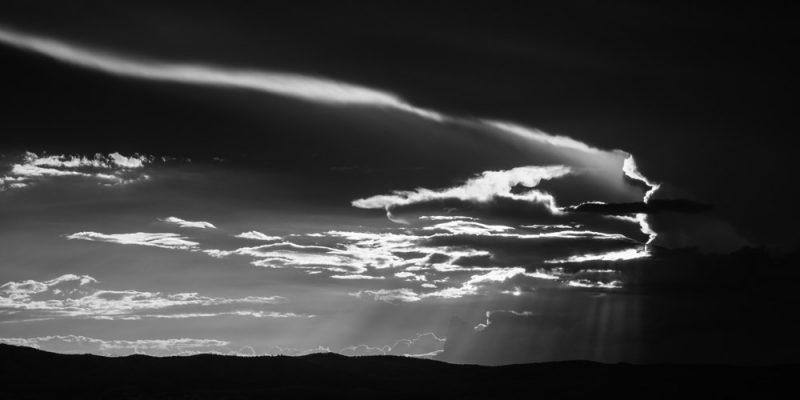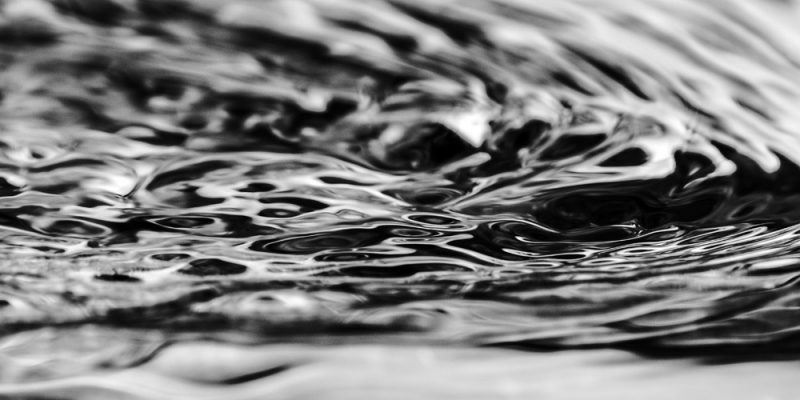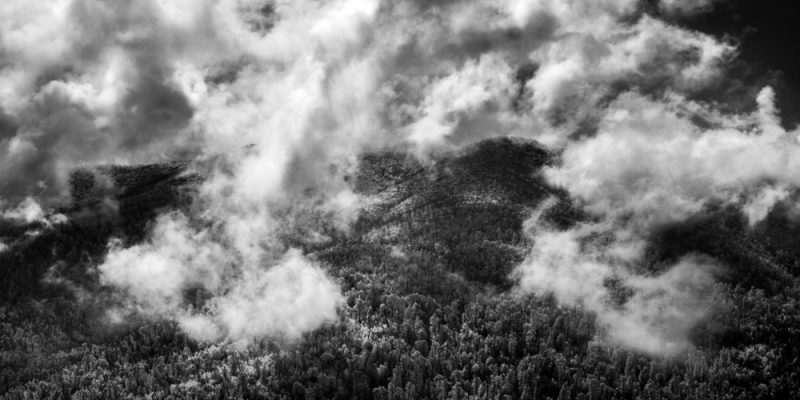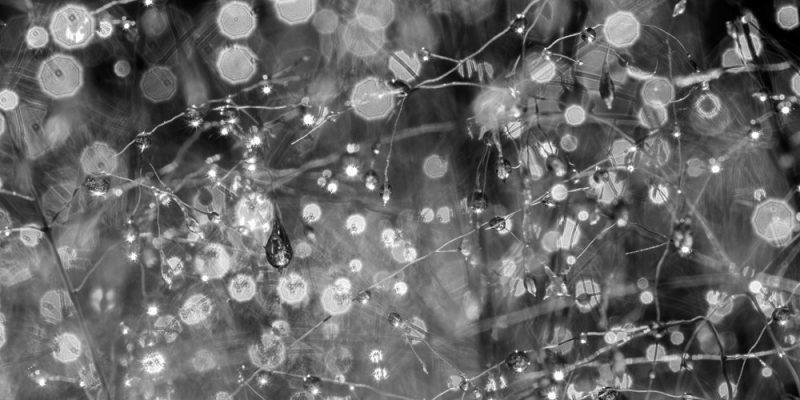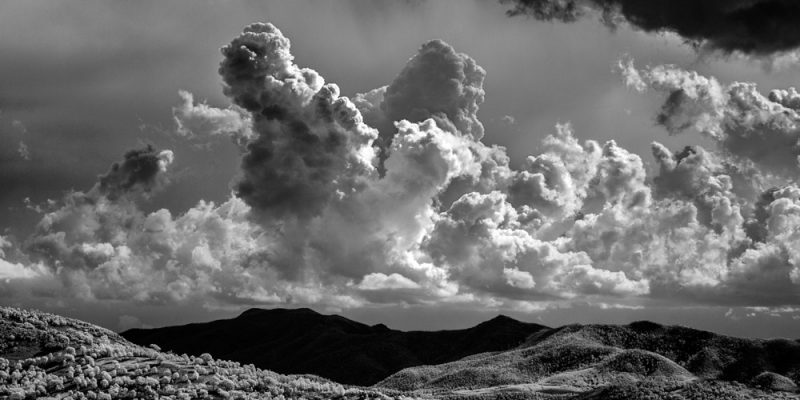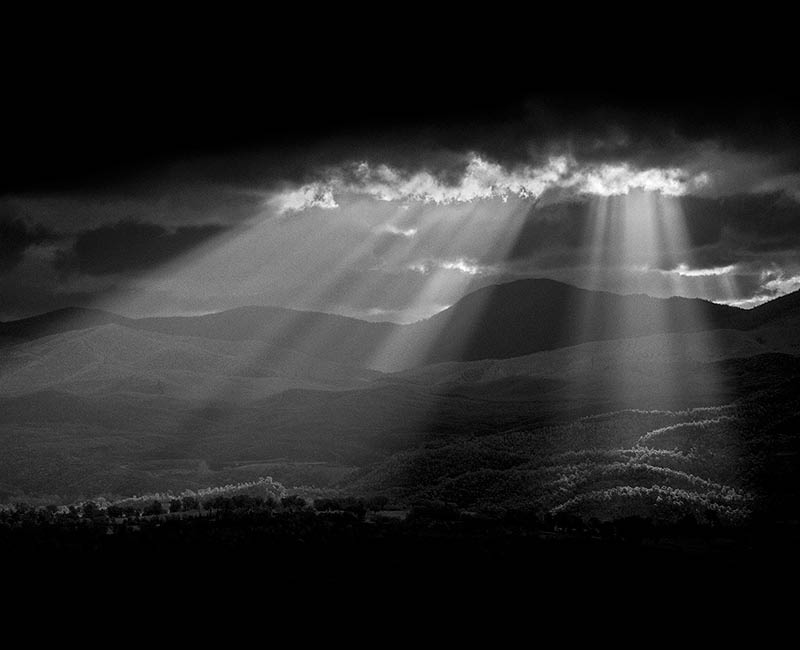Near-infrared | the edge of (visible) light
The BRINDABELLAS project was filmed and photographed using near-infrared imaging techniques. In photography these are often defined as just infrared but near-infrared is a more accurate description as the wavelengths recorded fall within the near-infrared spectrum: 750 – 1400 nanometres (nm). By comparison, light that’s visible to the typical human eye lies between 390 and 700nm.
Longer wavelengths used for other infrared applications, like thermal imaging, are not recorded with these techniques. So the edge of light images are not directly reflecting the temperature of the landscapes – they are simply created from light slightly beyond the range of the human eye.
near-infrared | artist’s notes
“I usually prefer near-infrared over traditional monochrome or colour for landscape photography because I feel its distinctive look is ideal for capturing the essence of many Australian natural landscapes. There’s also a certain magic in recording images with light you can’t actually see.
In sunny conditions near-infrared produces a striking combination of dark skies and water, perfect white clouds and ghostly pale glowing foliage. It also cuts through atmospheric haze and accentuates shadows in a landscape, particularly in the late afternoon or dusk. These bold shadows add an extra dimension to many landscapes.
coruuna lake (2002) | pigment on cotton rag | more on this piece
dusk series (from 2002) | Kodak high-speed monochromatic infrared film
untitled (a) (2007) | pigment on cotton rag | more on this piece
limestone series | Kodak high-speed monochromatic infrared film
Since experimenting with these techniques in dusk series (from 2002) I have increasingly used near-infrared to photograph much darker and duller environments – from late afternoon shadows and sunsets to rain and mist. In these conditions the more obvious near-infrared look is diminished, but more subtle textures and shadows are often revealed. The film component of BRINDABELLAS features a lot of footage shot in less than ideal near-infrared conditions.
Another aspect of near-infrared that appeals to me is its inherent imperfection – the inevitable grain, flares, aberrations and unforgiving inflexibility. Up close, near-infrared images often resemble a disconcerting chaos of visual noise. But at a reasonable viewing distance a clear and striking image emerges from the coarse and compromised details.To me the flaws of near-infrared make the unique beauty and depth of the final images even more appealing. The work required to tease out this beauty from uninspiring raw files only makes the challenge more rewarding and the final image more satisfying.
As digital imaging attains new levels of resolution and clarity, I still find that near-infrared’s limitations add to its aesthetic appeal – and its problematic nature only enhances the magic of the completed image.
sawyers gully road (2012) – pigment on cotton rag (1/1) | more on this piece
karst country series (from 2012)
south-east – August 24, 2014 – pigment on cotton rag (1/1) | more on this piece
Brindabellas print series (from 2013)
In a less technical sense, the main attraction of using near-infrared in a project like BRINDABELLAS is its ability to subtly transform an everyday landscape into something slightly surreal. The monochromatic images I produce often don’t, at first glance, seem that different from traditional black and white. However, there’s a slightly different quality to the near-infrared images that makes people look twice and draws them into the scene”.
Glen Ryan | from brindabellas – elements



